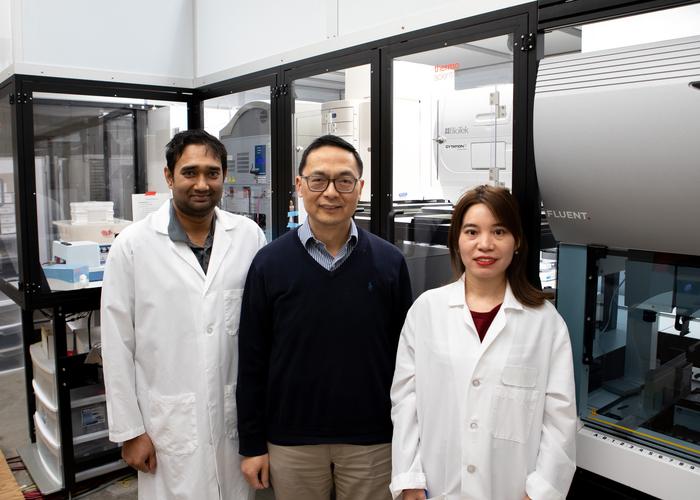Researchers at the University of Illinois Urbana-Champaign have unveiled a groundbreaking advancement in the pursuit of bioactive natural products, which hold the promise of leading to transformative therapeutic agents. Their newly developed platform, known as FAST-NPS (Fully Automated Screening Technology for Natural Product Synthesis), marks a significant leap forward in how scientists identify and scale the discovery of bioactive compounds derived from organisms such as Streptomyces. This innovative approach addresses existing hurdles in natural product research, notably the challenges surrounding low yield and the inherent complexity of these biologically produced compounds.
Natural products have been instrumental in various sectors including medicine, where they serve as the foundation for numerous antibiotics. The use of organisms from nature, particularly bacteria and fungi, has led to the identification of life-saving antibiotics like erythromycin and vancomycin. However, despite the wealth of potential natural products that remain undiscovered—estimated in the tens of thousands—the process of isolating new candidates has traditionally posed significant difficulties. Compounds of interest are often produced in minuscule quantities, complicating detection and extraction processes.
The FAST-NPS platform seeks to streamline and enhance these processes by leveraging the power of genomic sequencing and computational technology. Previous methods of microbial genome mining have yielded significant results; however, they are not without their shortcomings. Many natural products identified through conventional means lack bioactivity, and there is a growing need to develop methodologies that can provide more accurate predictions of which compounds could be biologically active. FAST-NPS is designed to tackle these challenges head-on.
One of the core innovations of FAST-NPS lies in its use of self-resistance genes as markers for prioritizing biosynthetic gene clusters (BGCs). These genes act as scientific signposts, guiding researchers to BGCs that are likely to yield bioactive natural products. The evolutionary role of self-resistance genes is to protect organisms from the adverse effects of their own natural products. By honing in on these genes, researchers can improve the efficiency of their discovery process, steering focus toward more promising genomic targets.
Under the leadership of Huimin Zhao, the Steven L. Miller Chair of Chemical and Biomolecular Engineering, the research team adapted earlier cloning technologies into a fully automated high-throughput platform. This transition from labor-intensive manual procedures to a robotic system significantly reduces the time and effort involved in identifying and producing bioactive compounds. Zhao emphasizes the need for an efficient and scalable method, one that can accommodate the large-scale cloning of biosynthetic pathways necessary for reviewing natural products.
The team’s innovative platform integrates seamlessly with the Antibiotic Resistant Target Seeker tool (ARTS), which serves as a critical component in identifying BGCs from microbial genomes. Once target BGCs are isolated, they are cloned into bacterial hosts capable of synthesizing the respective natural products. This integration is crucial, as the research community continues to seek methodologies that bolster yield without sacrificing quality.
Moreover, the automation brought about by FAST-NPS facilitates a dramatic increase in throughput. Where previous manual methods permitted the cloning and expression of approximately ten BGCs simultaneously, this new platform allows the same research team to efficiently manage hundreds of BGCs in parallel. Such scalability not only enhances productivity but also expedites the entire process of natural product discovery.
The journey toward establishing a fully automated workflow presented multiple challenges. The development team had to create each component of the automation process, ranging from polymerase chain reaction (PCR) manipulation, which amplifies DNA sequences, to RNA transcription and the transformation of bacteria. This meticulous attention to detail ensures that the resultant system operates seamlessly, with the important goal of maintaining the integrity of the biological processes involved.
The results speak volumes about the platform’s capability. In a proof-of-concept study, the team reported a staggering 95% success rate in cloning 105 BGCs derived from 11 Streptomyces strains, showcasing the effectiveness of their automated approach. Remarkably, five of these BGCs were not only identified but also confirmed to produce compounds with bioactive properties. This breakthrough represents a significant paradigm shift in natural product research, offering a glimpse into a future where new medicinal compounds may be discovered at unprecedented rates.
Nevertheless, there remains room for growth and improvement in the platform’s effectiveness. While the discovery of bioactive compounds is a promising achievement, Zhao points out that the ability to functionally express these compounds in a heterologous system still faces limitations. Of the numerous BGCs cloned, only twelve were able to be expressed functionally, indicating a need for ongoing research to refine these processes further and enhance success rates.
The implications of FAST-NPS extend far beyond the laboratory. By greatly improving the efficiency of natural product discovery, this platform could profoundly impact the fields of pharmaceuticals and biotechnology. As researchers continue to adapt and optimize this automated workflow, the potential for finding novel bioactive compounds—essential for combating microbial resistance and developing new treatments—could reshape our understanding of medicine and health on a global scale.
In conclusion, the unveiling of the FAST-NPS platform marks an exciting frontier in the realm of bioactive natural product research. Through cutting-edge technology, innovative methodologies, and collaborative scientific efforts, the University of Illinois team is paving the way for a new era where the hidden treasures of natural compounds can be revealed, studied, and utilized for the betterment of human health.
Subject of Research: Bioactive Natural Products Discovery
Article Title: Self-resistance-gene-guided, high-throughput automated genome mining of bioactive natural products from Streptomyces
News Publication Date: 11-Mar-2025
Web References: DOI Link
References: N/A
Image Credits: Isaac Mitchell
Keywords
Bioactive Natural Products, FAST-NPS, Streptomyces, Genomic Sequencing, Self-Resistance Genes, High-Throughput, Automation, Natural Product Discovery, Bacterial Synthesis, Biosynthetic Gene Clusters.
Tags: antibiotic discovery from natureautomated screening technologybioactive natural productschallenges in natural product researchefficiency in compound extractionFAST-NPS platformgenomic sequencing in bioinformaticsinnovative approaches in drug developmentmicrobial genome mining techniquesnatural product synthesisStreptomyces as a sourcetherapeutic agents discovery





